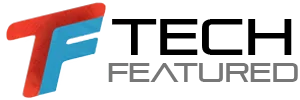If you’re in the market for a new graphics card, then you might need a helping hand in order to find the right card for your needs. At a first glance, the amount of choices could be overwhelming, not to mention the cost of some of the cards that could easily set you back a few months wages, or more! So which card do you go for?
Keep it simple
Although you will see many different manufacturers selling an array of different computer graphics cards, there are only 2 manufacturers of graphics processing units (GPU’s), AMD and Nvidia. They produce the reference cards which contain the GPU’s, they then make those ‘chips’ available to the computing market so that aftermarket companies can tweak, and add features to their own cards, or boards, as they see fit.
Your purpose
If you are into extreme video rendering then you might want to look at the Nvidia Quadro range of cards although they are a very specialist group of cards, certainly not to be confused with graphics cards for gaming. If, on the other hand, you intend to buy a card for gaming then you probably want to spend as much as you can afford ‘whilst being sensible’ of course in order to make sure your card lasts you a few years.
The gaming market moves so quickly that, like your mobile phone, if you cheap out, you could find yourself wishing you’d spent that little bit extra on a bit of extra horsepower. You will want to make sure that your power supply unit (PSU) is up to the task too. A quick google search should help you find out if your current PSU will be able to supply enough wattage for your new card, the requirements should also be listed somewhere in the card’s specifications.
Clocks and VRAM
You’ll probably notice terms like ‘GPU clock’, and ‘VRAM’ listed against the specifications for each card, the GPU clock is a frequency measured in MHz, the higher the clock speed the better. Some cards are capable of over 2000MHz when in ‘boost’ mode, which is super quick. Your card also needs VRAM (video random access memory) for it to be able to store things like shaders as you play your games.
If you are intending to play games at a 2k, or higher resolution then you really want to be looking at a card that has at least 8GB of VRAM and, you’ll want to make sure that your system has at least 16GB of RAM installed into the motherboard, some games can use over 14GB of system RAM as well as being hungry on your VRAM!
Reference or aftermarket?
If you choose to go with a reference card from Nvidia, or AMD then the chances are that you will pay a little more, even if the card appears to be reasonably ‘basic’ in terms of looks and function. The reason being is that Nvidia and AMD keep the best ‘chips’ for themselves meaning that they are more likely to hit higher speeds and maintain better thermal capacity. The main benefit of going with an aftermarket card is that you’ll find overclocked cards with custom PCB’s and cooling solutions, some even have water cooling!


